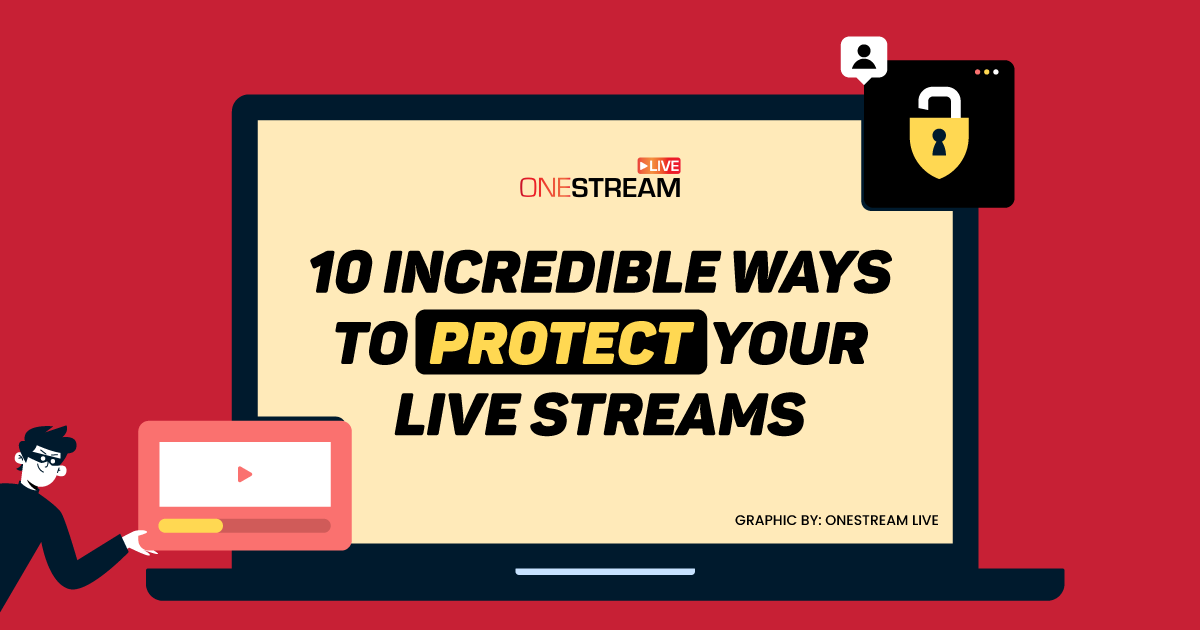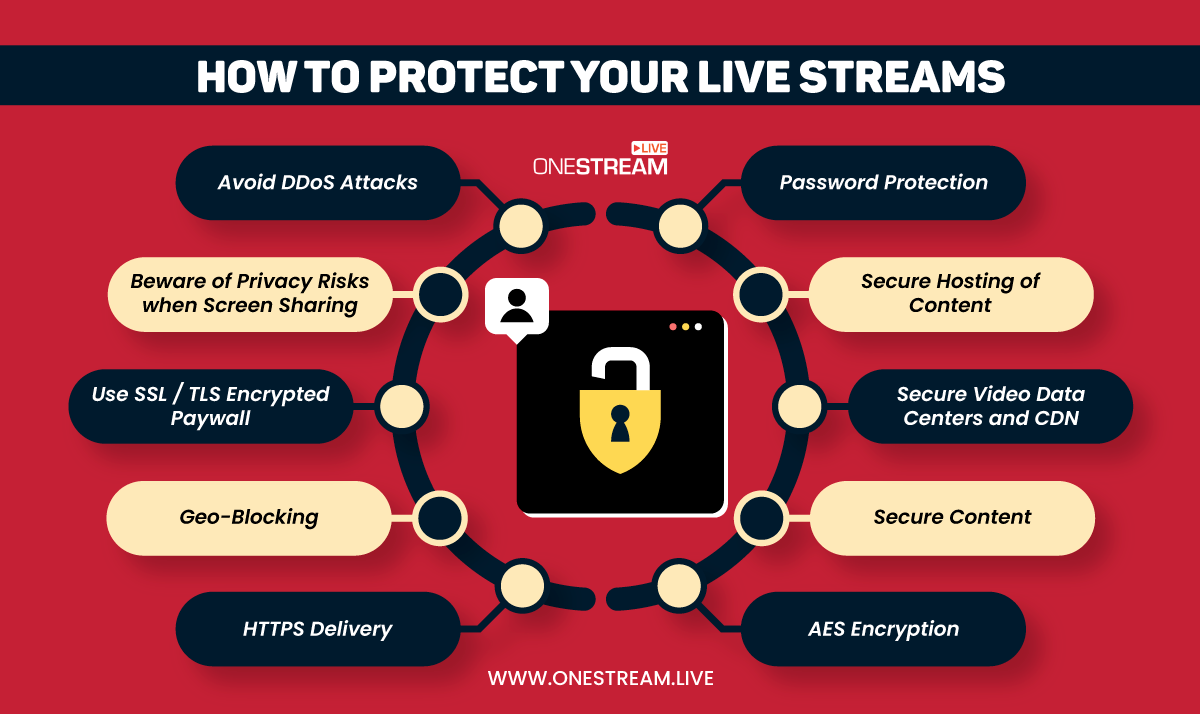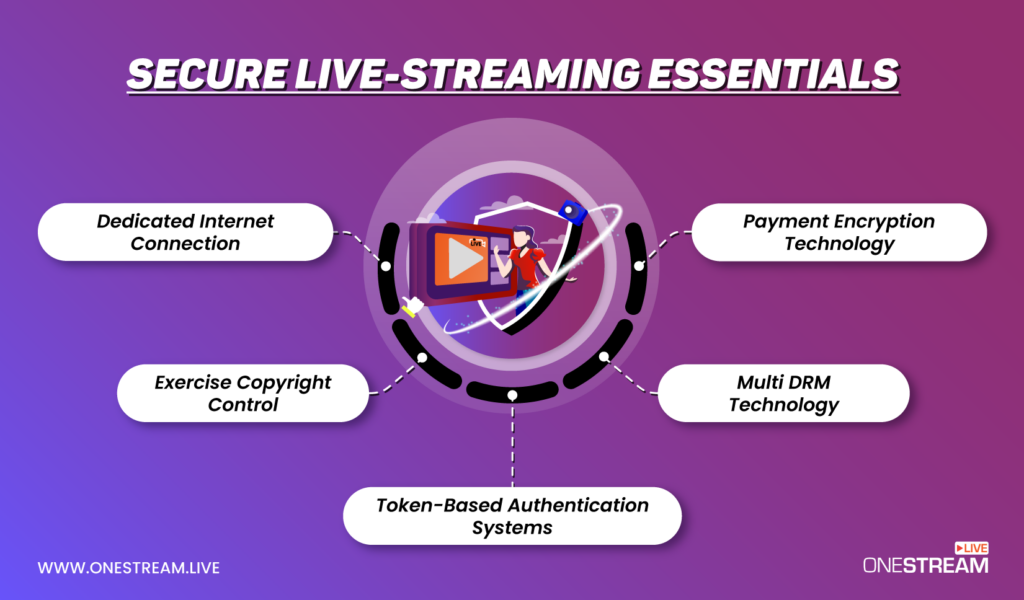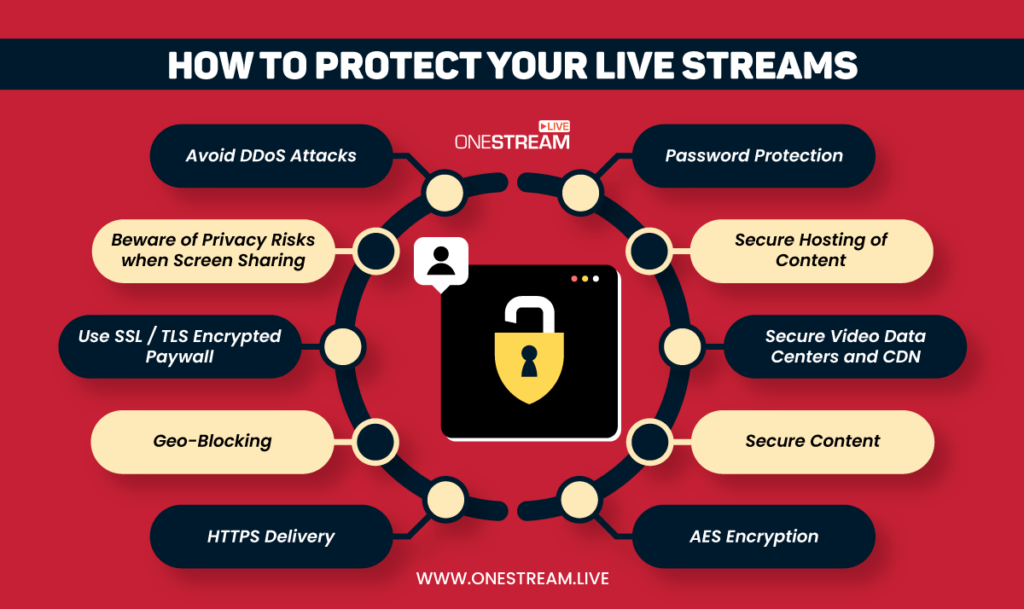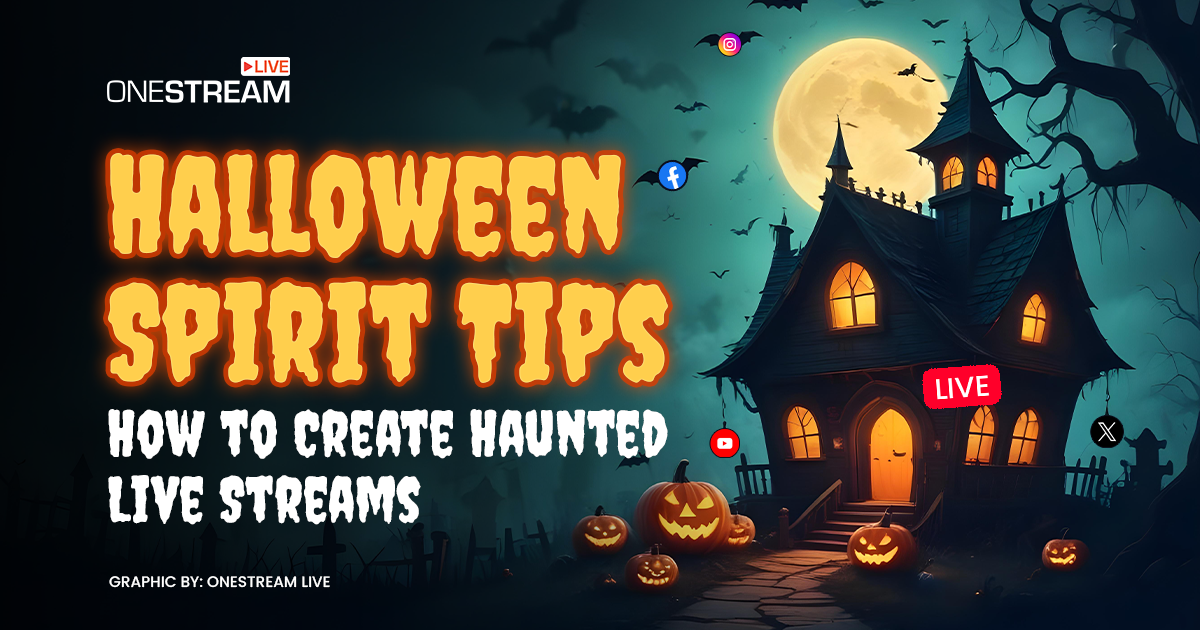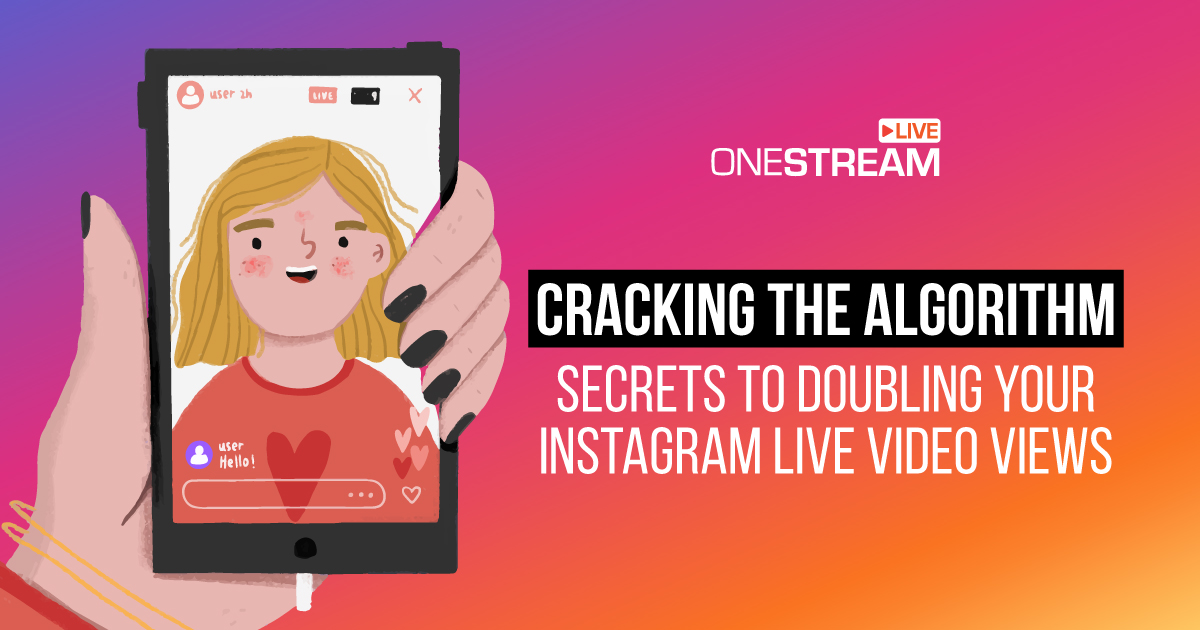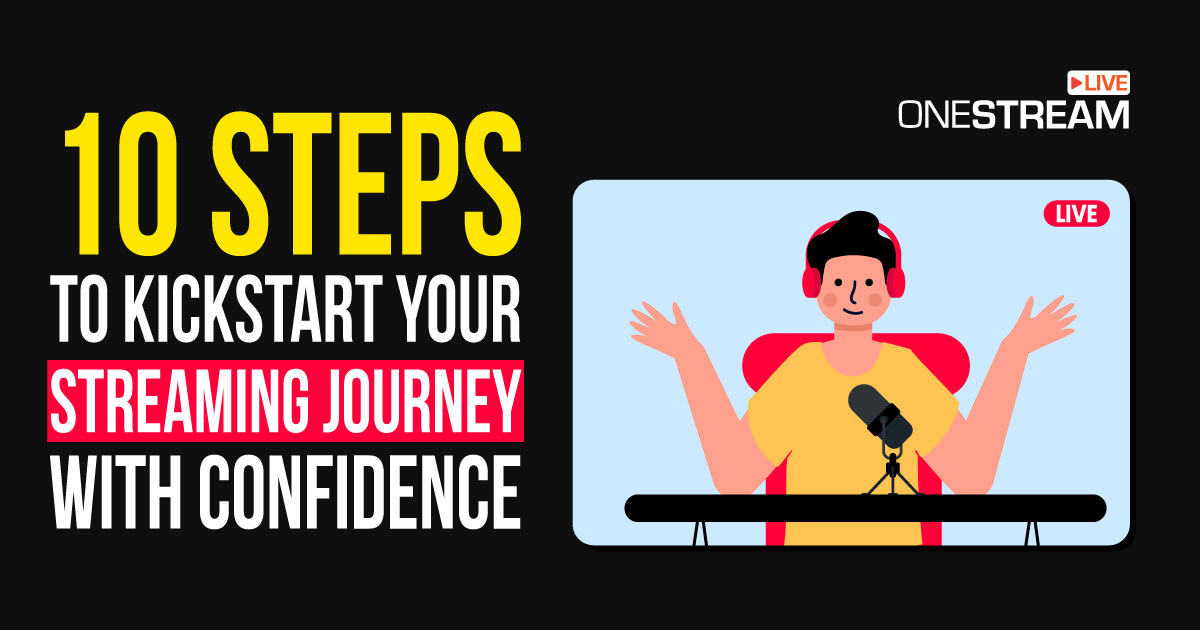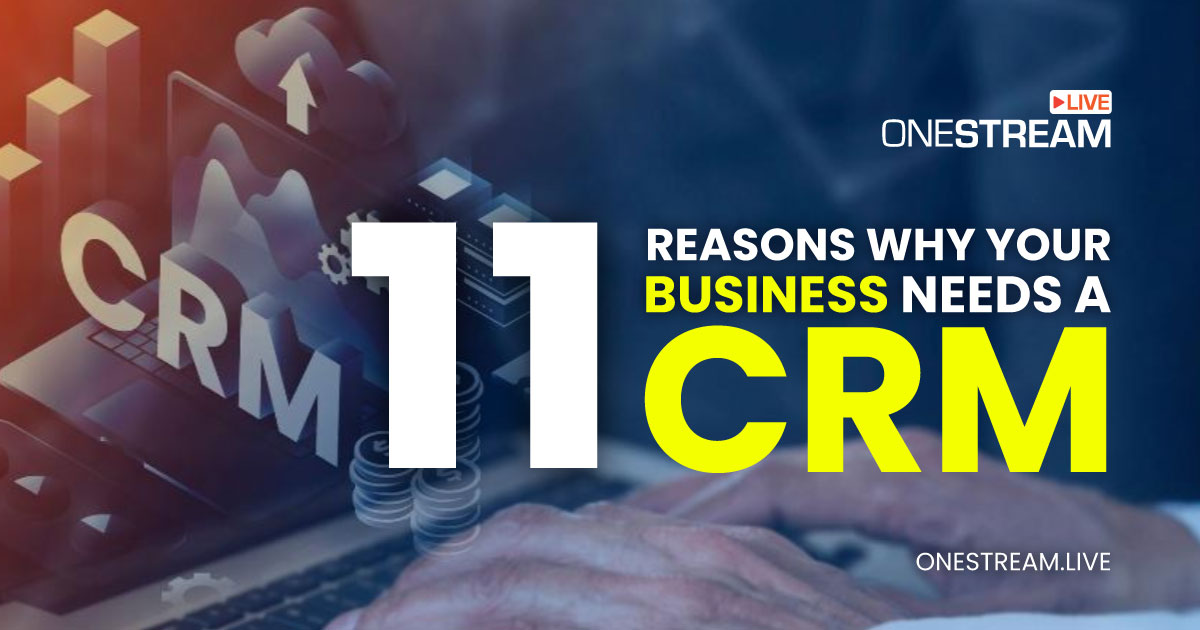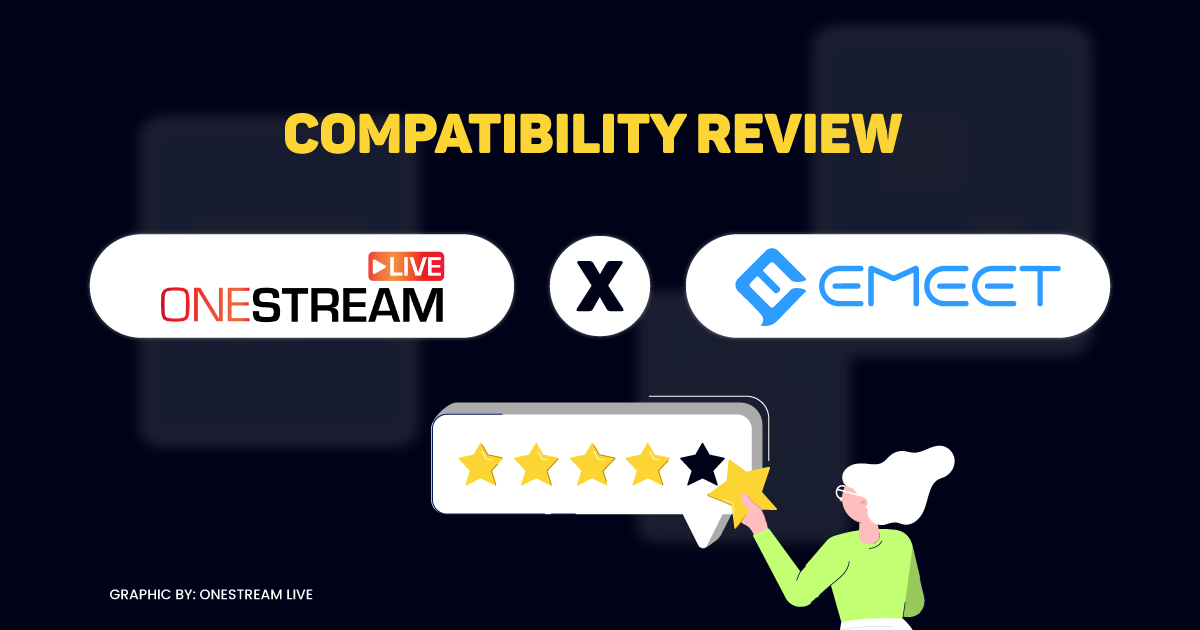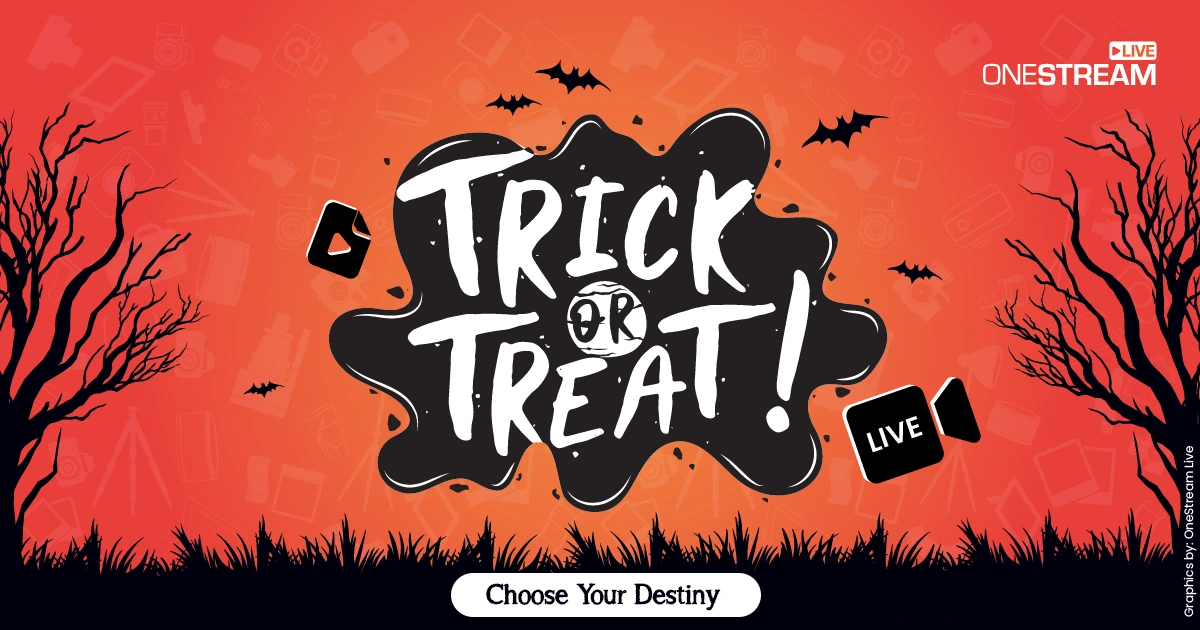More and more businesses are turning to online platforms to reach audiences. As part of this trend, live streaming has become an increasingly popular tactic for engaging customers and building brand awareness. Here’s the problem. With that popularity comes new challenges, including potential security breaches and technical glitches that can ruin your broadcast. And it couldn’t get any worse. According to estimates, the average cost of a data breach in 2023 is over $5 million.
If you fail to secure your live streaming platforms properly, you could expose yourself to significant financial risks, reputational damage, and loss of customer trust. But with a few practical tips, you can safeguard your streams from all potential risks. From using SSL Certificates to implementing two-factor authentication, we’ll explore several strategies to protect your live streams.
In this Article:
🔐 Why Secure Live Streams?
If you’re thinking about live streaming your next event or product launch, security might not be the first thing on your mind. But as the number of live streaming platforms and services continues to grow, so do the risks associated with broadcasting online. From data breaches to hackers and technical malfunctions, plenty of potential pitfalls can derail your live stream if you’re not careful. And with more and more consumers looking to do business online, the stakes have never been higher. That’s why securing your live streams should be a top priority. Not only can it protect your business and your customers, but it can also give you peace of mind knowing that your broadcasts are safe and secure.
🛅 How to Protect Your Live Streams
Now that you understand how important it is to secure your live streams, you could wonder how to protect them. Well, this should be easy.
To protect your live streams, you can use a combination of encryption, secure streaming platforms, and other security measures such as firewalls implementation and installation of SSL certificates from reputed authorities like RapidSSL certificate, Sectigo SSL certificate, Comodo SSL Certificates, etc. It also does help to regularly update your security protocols and stay informed about the latest threats and vulnerabilities.
Here are ten more incredible ways to protect your live streams:
1️⃣ Password-Protection
Password protection is one of the most basic ways to protect your live streams. With password protection in place, viewers must enter a unique password to access your broadcast, which can prevent unauthorized access and keep your content secure. To set up password protection, choose a streaming platform that supports this feature. Some platforms may even allow you to set different passwords for different user groups, giving you more control over who can access your content. Keep in mind that while password protection is a useful security measure, it’s not foolproof. Hackers can still access your broadcast if they’re able to obtain the password.
That said, it would be best to add an extra layer of security to password protection, like two-factor authentication (2FA), for example. With 2FA, your audience will need to enter a unique code in addition to their password, which can provide an extra layer of security and help prevent unauthorized access.
2️⃣ Secure Video Data Centers and CDN
A video data center is a secure facility where your live stream data is stored, processed, and delivered to your audience. A CDN, on the other hand, is a network of servers strategically located worldwide to ensure fast and reliable content delivery. Video data centers and CDNs use advanced security measures like firewalls, SSL encryption, and other security protocols to safeguard your data and prevent unauthorized access. But that’s not all. Video data centers and CDNs also offer other benefits that can help improve your live streaming experience.
For example, they can help reduce latency and improve the quality of your stream by delivering content from the server closest to your audience. To take advantage of these technologies to protect your live streams, you may want to work with a reputable streaming platform that uses CDNs and secure video data centers as part of their service. Also, look for providers that offer advanced security measures and regularly update their protocols to stay ahead of the latest threats.
3️⃣ Use SSL / TLS Encrypted Paywall
Essentially, this involves requiring viewers to pay to access your live stream and using SSL/TLS encryption to secure their payment and personal data. This can be particularly effective if your business relies on live streaming as a source of revenue, such as sports events or concerts. Here, the use of SSL certificate can provide strong encryption for your live stream data, protecting against potential data breaches and ensuring your viewers can confidently engage with your stream. You can also add other security measures like firewalls and secure streaming to keep your live streams safe and secure.
4️⃣ Secure Content
Encryption scrambles your data, making it unreadable to anyone who does not have the encryption key. So, even if someone intercepts your live stream data, they won’t understand it without the key. To implement content encryption on your website, you may want to use a streaming script or software that supports encryption. These scripts typically use advanced encryption protocols like AES-128 or AES-256 to protect your data from interception and hacking attempts.
5️⃣ AES Encryption
AES stands for Advanced Encryption Standard. It’s a type of encryption used to protect data transmitted over the internet. AES encryption also works by scrambling your data in such a way that it can only be read by someone with the correct encryption key. This makes it virtually impossible for hackers or other unauthorized parties to intercept and decode your live stream data. Again, to use AES encryption, you may need to work with a streaming platform or service that offers it as an option. You’ll also need to ensure that your live stream software and hardware are compatible with AES encryption.
6️⃣ Geo-Blocking
Geo-blocking is a security that allows you to restrict access to your live streams based on geographic location. This way, you can prevent unauthorized access and ensure your streams are only available to your target audience. This can be especially useful if you’re broadcasting sensitive or exclusive content, like a private company event or a high-profile product launch. Geo-blocking can be implemented through your streaming platform or third-party software.
7️⃣ Secure Hosting
If you’re going to stream videos directly from your website or app, look for a hosting provider that offers robust security features like SSL encryption, firewalls, and regular security updates. They should also be easy to reach in cases of emergency. These features can help prevent hackers and cyber threats from accessing your content or disrupting your live streams. Also, consider using a content delivery network (CDN) to distribute your streams, as this can help improve security and prevent buffering issues.
8️⃣ HTTPS Delivery
HTTPS delivery works by encrypting your data and ensuring hackers or other third parties can’t intercept it. With HTTPS delivery, your viewers will see a padlock icon next to your website address, indicating that your site is secure. This can give your audience peace of mind and build trust in your brand. You’ll need an SSL certificate and the right web hosting provider to implement HTTPS delivery. It’s a simple but effective way to safeguard your live streams and protect your customers’ data.
9️⃣ Beware of Privacy Risks when Screen Sharing
Screen sharing is a common way to share information with audiences when live streaming. Here’s the problem; screen sharing can accidentally reveal sensitive information you didn’t intend to share. To protect your live streams, you can minimize privacy risks by carefully selecting what you share on your screen. Close any unnecessary tabs or applications and avoid sharing anything that could compromise your or your customers’ privacy. In screen sharing, you can also use blur or masking to hide sensitive information.
🔟 Avoid DDoS Attacks
Picture this: You’re in the middle of a captivating live stream, engaging with your audience, and suddenly your stream goes down. What happened? It could be a DDoS attack. Distributed Denial of Service attacks overloads your server with a flood of requests, crippling your stream. To protect yourself, invest in a full DDoS protection service or use a content delivery network (CDN) that offers built-in protection. These measures can detect and filter malicious traffic, ensuring your live streams stay up and running and captivate your audience without interruption.
🎯 Final Thoughts
Live streaming has become a popular way to engage customers and grow brands. However, with all the new challenges and risks surrounding it, your broadcasts can have less success or only bring new problems for your business. So, it is wise to take proactive steps to protect your live streams to minimize the risks and ensure that your broadcasts are safe, secure, and engaging for your audience. In fact, securing live streams should be a top priority for any business looking to succeed in the digital age.
OneStream Live Image Gallery
OneStream Live is a cloud-based live streaming solution to create, schedule, and multistream professional-looking live streams across 45+ social media platforms and the web simultaneously. For content-related queries and feedback, write to us at [email protected]. You’re also welcome to Write for Us!

